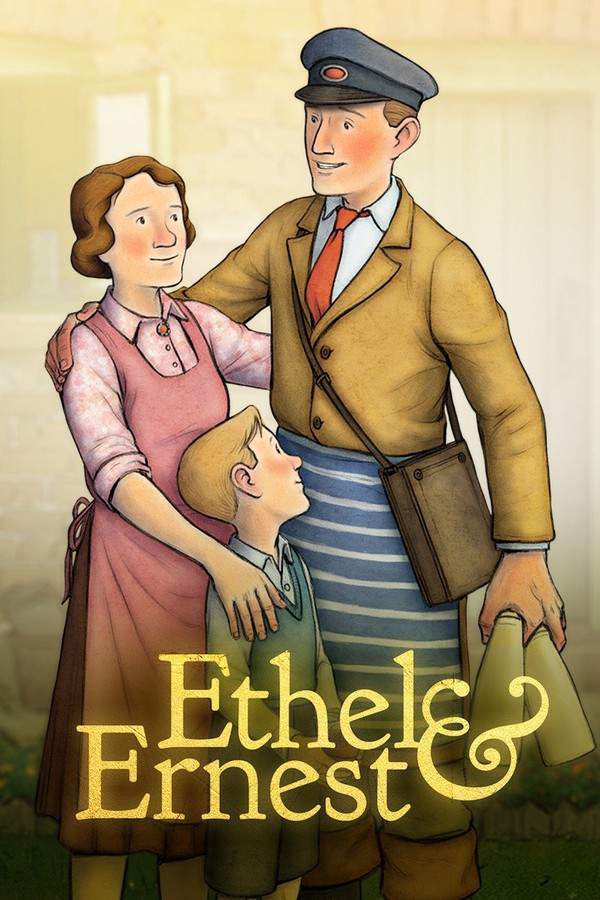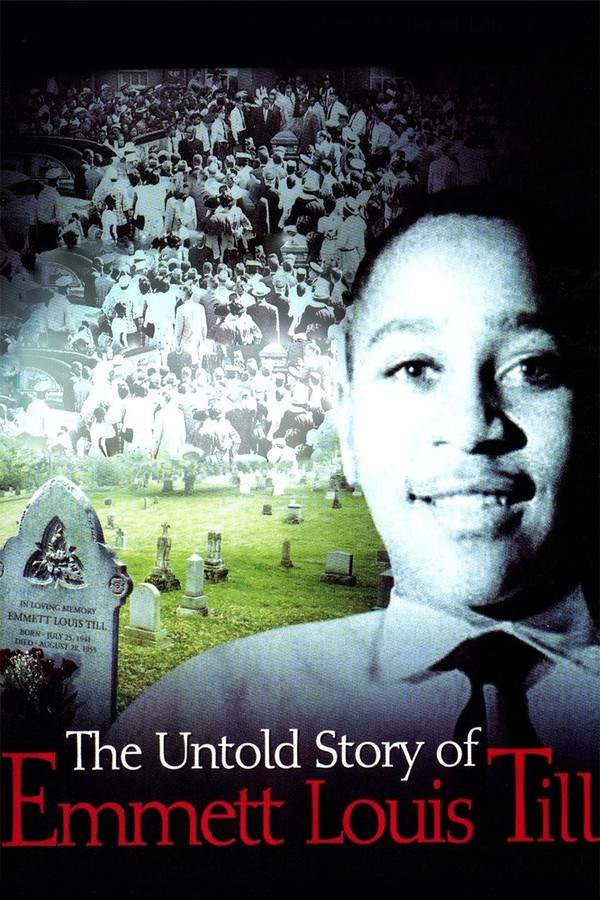
The Ernest Green Story
Year: 1993
Runtime: 101 mins
Language: English
Director: Eric Laneuville
Ernest Green’s courageous stand transforms Central High School forever. The film chronicles his experience as a member of the Little Rock Nine, the nine African‑American teenagers who, in 1957, bravely integrated the all‑white Central High in Little Rock, Arkansas, enduring fierce opposition while pursuing their education and becoming enduring symbols of the Civil Rights Movement.
Warning: spoilers below!
Haven’t seen The Ernest Green Story yet? This summary contains major spoilers. Bookmark the page, watch the movie, and come back for the full breakdown. If you're ready, scroll on and relive the story!
The Ernest Green Story (1993) – Full Plot Summary & Ending Explained
Read the complete plot breakdown of The Ernest Green Story (1993), including all key story events, major twists, and the ending explained in detail. Discover what really happened—and what it all means.
Ernest Green reflects on a quiet morning ritual that becomes a turning point in American history: as he rides to Horace Mann, he passes the soon-to-open Central High, a school that will welcome nine African-American students. The scene shifts to the office of Orval Faubus, the Governor of Arkansas, where the Reverend of the local white church explains why he opposes integration, arguing that it is a matter of states’ rights. The conflict is framed from the start as a clash between courage and tradition, law and conscience.
In Ernest’s neighborhood, his best friend Marcus lays out a hopeful vision: becoming class president at the newly integrated Central High could be a way to change the world. Ernest weighs the fear of danger against the lure of opportunity, recalling the martyr-like statement Crispus Attucks might have inspired, “the first to defy is the first to die.” This moment captures a core tension of the film: the cost of standing up to entrenched racism. Marcus persuades him with a dream of the school’s promises—the lab, the chance to make discoveries, the sense that greatness could be found within its walls.
Ernest’s family stands behind him. His grandfather—Grandfather—offers quiet wisdom and steadfast support, even as his elderly neighbor worries about the danger that his son or grandson might face at Central High. The family’s faith in Ernest’s choices becomes a touchstone for the moral arc of the story, a reminder that personal bravery often travels with communal love.
As the Little Rock Nine prepare for their new reality, they meet their peers, the principal, and the counselors of Central High. Ernest emerges as a natural leader and earns the respect of Daisy Bates, an NAACP member who helps guide them through the legal and emotional maelstrom. The nine are warned that they will face restrictions at first, and the principal imposes limits on extracurricular activities, signaling the long road ahead.
The first day brings the cruel reality of the scene outside the school: National Guard troops stand guard to shield the students from the mobs. Inside the building, the atmosphere is tense and unequal. Elizabeth Eckford, in a harrowing moment, attempts to enter the building alone, only to be met with a wall of abuse and violence and is escorted back to safety. The other Black students are turned away as well, and a chilling sense of uncertainty settles over the hallways.
Back at home, Bates enlists Thurgood Marshall, the famed attorney, to argue the Nine’s right to attend Central High. For weeks, the students learn at home, their assignments provided by Bates as they ride out the initial refusal to admit them. When they are finally allowed back in, Ernest faces hostility from his physics teacher, Mr. Loomis, who doubts his abilities simply because of his race. The barrier of bias becomes a recurring obstacle, testing Ernest’s resolve and his belief in fairness.
Along the way, Ernest finds a fragile friendship with a white classmate who shares his passion for jazz, though such connections risk repeating history’s darkest chapters. He also encounters Charlene Talbot, a prejudiced white student who accuses him of inappropriate behavior, landing him in the principal’s office. Charlene Talbot becomes a reminder of the barriers that prejudice can erect even in small, everyday moments. Missy Crider, who portrays both Minnijean Brown and Charlene Talbot, navigates the complex emotional landscape of two very different experiences within the same school.
The social pressure intensifies: white students torment the Nine, steal Ernest’s physics notes, and, in one of the film’s starkest moments, Minnijean Brown stands up to the principal and is expelled. Elizabeth Eckford endures an assault on the stairs, and Ernest himself is suspended after defending himself in a confrontation. The escalating mistreatment tests the students’ endurance, their families’ faith, and the community’s willingness to insist on justice.
Meanwhile, Ernest’s brother Scott Scott Green grapples with the magnetic pull of fear and violence on the streets, choosing to rise in a different kind of bravery by protecting others. The film portrays a family and a community stretched to the limit by prejudice, yet driven by a stubborn belief that education and equality are worth fighting for.
Despite the hardships, the school year also yields small, meaningful victories. Ernest eventually passes physics and earns a degree of recognition for his intellect, proving to his doubters that mastery can triumph over bias. As spring arrives in 1958, he graduates with his peers, and his grandfather accompanies the moment with pride, capturing memories in photographs that celebrate perseverance and achievement.
The film’s epilogue sits with quiet honesty: Central High would close its doors briefly after Ernest’s graduation, a stark symbol of the resistance to integration in that era. Yet the real measure of the story is not the walls of the school but the path Ernest walks afterward—one that leads him to a life of advocacy with the NAACP, continuing the fight for civil rights beyond the classroom.
Thurgood Marshall looms over the legal strategy, Daisy Bates anchors the group’s leadership, and Rev. Lawson and Rev. Matcher provide moral perspectives on the community’s response. The narrative is anchored in the resilience of the Little Rock Nine and the families who stood by them, offering a window into courage, fear, and the long, ongoing struggle toward equality. The film honors those who dared to envision a different future and who chose to act, even when the odds were overwhelming. > the first to defy is the first to die
Note: All actor names linked are drawn from the provided cast list, and links are kept to the actors who appear in the cast information. Links are relative and framed to direct readers to the corresponding actor pages on What’s After the Movie.
Last Updated: October 09, 2025 at 10:51
Unlock the Full Story of The Ernest Green Story
Don't stop at just watching — explore The Ernest Green Story in full detail. From the complete plot summary and scene-by-scene timeline to character breakdowns, thematic analysis, and a deep dive into the ending — every page helps you truly understand what The Ernest Green Story is all about. Plus, discover what's next after the movie.
The Ernest Green Story Timeline
Track the full timeline of The Ernest Green Story with every major event arranged chronologically. Perfect for decoding non-linear storytelling, flashbacks, or parallel narratives with a clear scene-by-scene breakdown.

Similar Movies to The Ernest Green Story
Discover movies like The Ernest Green Story that share similar genres, themes, and storytelling elements. Whether you’re drawn to the atmosphere, character arcs, or plot structure, these curated recommendations will help you explore more films you’ll love.
Explore More About Movie The Ernest Green Story
The Ernest Green Story (1993) Scene-by-Scene Movie Timeline
The Ernest Green Story (1993) Movie Characters, Themes & Settings
The Ernest Green Story (1993) Spoiler-Free Summary & Key Flow
Movies Like The Ernest Green Story – Similar Titles You’ll Enjoy
Selma (2014) Story Summary & Characters
Ethel & Ernest (2017) Full Movie Breakdown
The Untold Story of Emmett Louis Till (2005) Ending Explained & Film Insights
War Eagle, Arkansas (2007) Detailed Story Recap
Crisis at Central High (1981) Spoiler-Packed Plot Recap
For Us, the Living: The Story of Medgar Evers (1983) Plot Summary & Ending Explained
Red, White and Blue (1000) Detailed Story Recap
Nothing But a Man (1964) Movie Recap & Themes
The Green-Eyed Blonde (1957) Movie Recap & Themes
The Corn Is Green (1979) Story Summary & Characters
Ernest Goes to School (1994) Film Overview & Timeline
The Vernon Johns Story (1994) Movie Recap & Themes
The Green Years (1946) Full Summary & Key Details
Nine from Little Rock (1964) Spoiler-Packed Plot Recap
Selma, Lord, Selma (1999) Film Overview & Timeline

















